So you are planning to switch from Windows to Linux, or have just switched to Linux? Oops!!! what I am asking! For what else reason would you have been here.
[ You might also like: How I Switched from Windows to Linux Mint ]
From my past experience when I was new, Linux commands and terminals really scared me, I was worried about the commands, as to what extent I have to remember and memorize commands to get myself fully functional with Linux.
No doubt online documentation, Linux books, man pages, and user community helped me a lot but I strongly believed that there should be an article with basic Linux commands in easy-to-learn and understand language. These Motivated me to Master Linux and to make it easy to use. This article is a step towards it.
1. Command: ls
The command “ls” stands for (List Directory Contents), List the contents of the folder, be it file or folder, from which it runs.
root@tecmint:~# ls Android-Games Music Pictures Public Desktop Tecmint.com Documents TecMint-Sync Downloads Templates
The command “ls -l” lists the content of the folder, in a long listing fashion.
root@tecmint:~# ls -l total 40588 drwxrwxr-x 2 ravisaive ravisaive 4096 May 8 01:06 Android Games drwxr-xr-x 2 ravisaive ravisaive 4096 May 15 10:50 Desktop drwxr-xr-x 2 ravisaive ravisaive 4096 May 16 16:45 Documents drwxr-xr-x 6 ravisaive ravisaive 4096 May 16 14:34 Downloads drwxr-xr-x 2 ravisaive ravisaive 4096 Apr 30 20:50 Music drwxr-xr-x 2 ravisaive ravisaive 4096 May 9 17:54 Pictures drwxrwxr-x 5 ravisaive ravisaive 4096 May 3 18:44 Tecmint.com drwxr-xr-x 2 ravisaive ravisaive 4096 Apr 30 20:50 Templates
Command “ls -a“, list the content of a folder, including hidden files starting with '.'.
root@tecmint:~# ls -a . .gnupg .dbus .adobe deja-dup .grsync .gstreamer-0.10 .mtpaint .thumbnails .HotShots .mysql_history .htaccess .profile .bash_history .icons .jedit .pulse .bashrc .Xauthority .gconf .local .gftp .macromedia .remmina .ssh .xsession-errors .compiz .xsession-errors.old .config .gnome2
Note: In Linux file name starting with ‘.‘ is hidden. In Linux, every file/folder/device/command is a file. The output of ls -l is:
- d (stands for directory).
- rwxr-xr-x is the file permission of the file/folder for the owner, group, and world.
- The 1st ravisaive in the above example means that the file is owned by user ravisaive.
- The 2nd ravisaive in the above example means the file belongs to the user group ravisaive.
- 4096 means file size is 4096 Bytes.
- May 8 01:06 is the date and time of the last modification.
- And at the end is the name of the File/Folder.
For more “ls” command examples read our series of articles:
- 15 Basic ls Command Examples in Linux
- 7 Quirky ‘ls’ Command Tricks Every Linux User Should Know
- How to Sort Output of ‘ls’ Command By Last Modified Date and Time
- How to List All Files Ordered by Size in Linux
2. Command: lsblk
The “lsblk” stands for (List Block Devices), print block devices by their assigned name (but not RAM) on the standard output in a tree-like fashion.
root@tecmint:~# lsblk NAME MAJ:MIN RM SIZE RO TYPE MOUNTPOINT sda 8:0 0 232.9G 0 disk ├─sda1 8:1 0 46.6G 0 part / ├─sda2 8:2 0 1K 0 part ├─sda5 8:5 0 190M 0 part /boot ├─sda6 8:6 0 3.7G 0 part [SWAP] ├─sda7 8:7 0 93.1G 0 part /data └─sda8 8:8 0 89.2G 0 part /personal sr0 11:0 1 1024M 0 rom
The “lsblk -l” command list block devices in the ‘list‘ structure (not tree-like fashion).
root@tecmint:~# lsblk -l NAME MAJ:MIN RM SIZE RO TYPE MOUNTPOINT sda 8:0 0 232.9G 0 disk sda1 8:1 0 46.6G 0 part / sda2 8:2 0 1K 0 part sda5 8:5 0 190M 0 part /boot sda6 8:6 0 3.7G 0 part [SWAP] sda7 8:7 0 93.1G 0 part /data sda8 8:8 0 89.2G 0 part /personal sr0 11:0 1 1024M 0 rom
Note: lsblk is a very useful and easiest way to know the name of the New Usb Device you just plugged in, especially when you have to deal with disk/blocks in the terminal.
[ You might also like: 10 Useful Commands to Collect System and Hardware Information in Linux ]
3. Command: md5sum
The “md5sum” stands for (Compute and Check MD5 Message-Digest), md5 checksum (commonly called a hash) is used to match or verify the integrity of files that may have changed as a result of a faulty file transfer, a disk error, or non-malicious interference.
root@tecmint:~# md5sum teamviewer_linux.deb 47790ed345a7b7970fc1f2ac50c97002 teamviewer_linux.deb
Note: The user can match the generated md5sum with the one provided officially. Md5sum is considered less secure than sha1sum, which we will discuss later.
4. Command: dd
Command “dd” stands for (Convert and Copy a file), can be used to convert and copy a file and most of the time is used to copy an iso file (or any other file) to a usb device (or any other location), thus can be used to make a bootable USB stick.
# dd if=/home/user/Downloads/debian.iso of=/dev/sdb1 bs=512M; sync
Note: In the above example the usb device is supposed to be sdb1 (You should Verify it using the command lsblk, otherwise you will overwrite your disk and OS), use the name of the disk very Cautiously!!!.
dd command takes some time ranging from a few seconds to several minutes in execution, depending on the size and type of file and read and write speed of Usb stick.
[ You might also like: How to Clone a Partition in Linux Using dd Command ]
5. Command: uname
The “uname” command stands for (Unix Name), print detailed information about the machine name, Operating System and Kernel.
root@tecmint:~# uname -a Linux tecmint 3.8.0-19-generic #30-Ubuntu SMP Wed May 1 16:36:13 UTC 2013 i686 i686 i686 GNU/Linux
Note: uname shows the type of kernel. uname -a output detailed information. Elaborating the above output of uname -a.
- “Linux“: The machine’s kernel name.
- “tecmint“: The machine’s node name.
- “3.8.0-19-generic“: The kernel release.
- “#30-Ubuntu SMP“: The kernel version.
- “i686“: The architecture of the processor.
- “GNU/Linux“: The operating system name.
6. Command: history
The history command stands for History (Event) Record, it prints the history of a long list of executed commands in the terminal.
root@tecmint:~# history 1 sudo add-apt-repository ppa:tualatrix/ppa 2 sudo apt-get update 3 sudo apt-get install ubuntu-tweak 4 sudo add-apt-repository ppa:diesch/testing 5 sudo apt-get update 6 sudo apt-get install indicator-privacy 7 sudo add-apt-repository ppa:atareao/atareao 8 sudo apt-get update 9 sudo apt-get install my-weather-indicator 10 pwd 11 cd && sudo cp -r unity/6 /usr/share/unity/ 12 cd /usr/share/unity/icons/ 13 cd /usr/share/unity
Note: Pressing “Ctrl + R” and then search for already executed commands which lets your command be completed with the auto-completion feature.
(reverse-i-search)`if': ifconfig
[ You might also like: Set Date and Time for Each Command You Execute in Bash History ]
7. Command: sudo
The “sudo” (superuser do) command allows a permitted user to execute a command as the superuser or another user, as specified by the security policy in the sudoers list.
root@tecmint:~# sudo add-apt-repository ppa:tualatrix/ppa
Note: sudo allows users to borrow superuser privileged, while a similar command ‘su‘ allows users to actually log in as superuser. Sudo is safer than su.
[ You might also like: 10 Useful Sudoers Configurations for Setting ‘sudo’ in Linux ]
It is not advised to use sudo or su for day-to-day normal use, as it can result in serious error if accidentally you did something wrong, that’s why a very popular saying in the Linux community is:
“To err is human, but to really foul up everything, you need a root password.”
8. Command: mkdir
The “mkdir” (make directory) command creates a new directory with a name path. However is the directory already exists, it will return an error message “cannot create a folder, folder already exists”.
root@tecmint:~# mkdir tecmint
Note: Directory can only be created inside the folder, in which the user has to write permission. mkdir: cannot create directory `tecmint‘: File exists.
(Don’t confuse with a file in the above output, you might remember what I said at the beginning – In Linux, every file, folder, drive, command, script are treated as a file).
[ You might also like: Explanation of “Everything is a File” and Types of Files in Linux ]
9. Command: touch
The touch command stands for (update the access and modification times of each FILE to the current time). touch command creates the file, only if it doesn’t exist. If the file already exists it will update the timestamp and not the contents of the file.
root@tecmint:~# touch tecmintfile
Note: touch can be used to create a file under the directory, on which the user has to write permission, only if the file doesn’t exist there.
10. Command: chmod
The Linux “chmod” command stands for (change file mode bits). chmod changes the file mode (permission) of each given file, folder, script, etc.. according to the mode asked for.
There exist 3 types of permission on a file (folder or anything but to keep things simple we will be using file).
Read (r)=4 Write(w)=2 Execute(x)=1
So if you want to give only read permission on a file it will be assigned a value of ‘4‘, for write permission only, a value of ‘2‘ and for execute permission only, a value of ‘1‘ is to be given. For read and write permission 4+2 = ‘6‘ is to be given, and so on.
Now, permission needs to be set for 3 kinds of users and user groups. The first is the owner, then the user group, and finally the world.
rwxr-x--x abc.sh
Here the root’s permission is rwx (read, write and execute).
usergroup to which it belongs, is r-x (read and execute only, no write permission) and
for the world is –x (only execute).
To change its permission and provide read, write and execute permission to the owner, group, and world.
root@tecmint:~# chmod 777 abc.sh
only read and write permission to all three.
root@tecmint:~# chmod 666 abc.sh
read, write and execute to the owner and only execute to group and world.
root@tecmint:~# chmod 711 abc.sh
Note: one of the most important commands useful for sysadmin and user both. On a multi-user environment or on a server, this command comes to the rescue, setting wrong permission will either make a file inaccessible or provide unauthorized access to someone.
11. Command: chown
The Linux “chown” command stands for (change file owner and group). Every file belongs to a group of users and an owner. It is used to do ‘ls -l‘ into your directory and you will see something like this.
root@tecmint:~# ls -l drwxr-xr-x 3 server root 4096 May 10 11:14 Binary drwxr-xr-x 2 server server 4096 May 13 09:42 Desktop
Here the directory Binary is owned by user “server” and it belongs to usergroup “root” whereas directory “Desktop” is owned by user “server” and belongs to user group “server“.
This “chown” command is used to change the file ownership and thus is useful in managing and providing files to authorized users and usergroup only.
root@tecmint:~# chown server:server Binary drwxr-xr-x 3 server server 4096 May 10 11:14 Binary drwxr-xr-x 2 server server 4096 May 13 09:42 Desktop
Note: “chown” changes the user and group ownership of each given FILE to NEW-OWNER or to the user and group of an existing reference file.
12. Command: apt
The Debian-based apt command stands for (Advanced Package Tool). Apt is an advanced package manager for Debian based system (Ubuntu, Kubuntu, etc.), that automatically and intelligently search, install, update and resolves dependency of packages on Gnu/Linux system from the command line.
root@tecmint:~# apt-get install mplayer Reading package lists... Done Building dependency tree Reading state information... Done The following package was automatically installed and is no longer required: java-wrappers Use 'apt-get autoremove' to remove it. The following extra packages will be installed: esound-common libaudiofile1 libesd0 libopenal-data libopenal1 libsvga1 libvdpau1 libxvidcore4 Suggested packages: pulseaudio-esound-compat libroar-compat2 nvidia-vdpau-driver vdpau-driver mplayer-doc netselect fping The following NEW packages will be installed: esound-common libaudiofile1 libesd0 libopenal-data libopenal1 libsvga1 libvdpau1 libxvidcore4 mplayer 0 upgraded, 9 newly installed, 0 to remove and 8 not upgraded. Need to get 3,567 kB of archives. After this operation, 7,772 kB of additional disk space will be used. Do you want to continue [Y/n]? y
root@tecmint:~# apt-get update Hit http://ppa.launchpad.net raring Release.gpg Hit http://ppa.launchpad.net raring Release.gpg Hit http://ppa.launchpad.net raring Release.gpg Hit http://ppa.launchpad.net raring Release.gpg Get:1 http://security.ubuntu.com raring-security Hit http://in.archive.ubuntu.com raring Release.gpg Hit http://ppa.launchpad.net raring Release.gpg Get:2 http://security.ubuntu.com raring-security Ign http://ppa.launchpad.net raring Release.gpg Get:3 http://in.archive.ubuntu.com raring-updates Hit http://ppa.launchpad.net raring Release.gpg Hit http://in.archive.ubuntu.com raring-backports
Note: The above commands result in system-wide changes and hence requires a root password (Check ‘#‘ and not ‘$' as prompt). Apt is considered more advanced and intelligent as compared to yum command.
As the name suggests, apt-cache searches for a package containing sub package mpalyer. apt-get install, update all the packages, that are already installed, to the newest one.
[ You might also like: 25 APT-GET and APT-CACHE Commands ]
13. Command: tar
The tar command is a Tape Archive is useful in the creation of an archive, in a number of file format and their extraction.
root@tecmint:~# tar -zxvf abc.tar.gz (Remember 'z' for .tar.gz)
root@tecmint:~# tar -jxvf abc.tar.bz2 (Remember 'j' for .tar.bz2)
root@tecmint:~# tar -cvf archieve.tar.gz(.bz2) /path/to/folder/abc
Note: A ‘tar.gz‘ means gzipped. ‘tar.bz2‘ is compressed with bzip which uses a better but slower compression method.
14. Command: cal
The “cal” (Calendar), is used to displays the calendar of the present month or any other month of any year that is advancing or passed.
root@tecmint:~# cal
May 2013
Su Mo Tu We Th Fr Sa
1 2 3 4
5 6 7 8 9 10 11
12 13 14 15 16 17 18
19 20 21 22 23 24 25
26 27 28 29 30 31
Show calendar of the year 1835 for the month of February, which already has passed.
root@tecmint:~# cal 02 1835 February 1835 Su Mo Tu We Th Fr Sa 1 2 3 4 5 6 7 8 9 10 11 12 13 14 15 16 17 18 19 20 21 22 23 24 25 26 27 28
Shows calendar of the year 2145 for the month of July, which will be advancing
root@tecmint:~# cal 07 2145
July 2145
Su Mo Tu We Th Fr Sa
1 2 3
4 5 6 7 8 9 10
11 12 13 14 15 16 17
18 19 20 21 22 23 24
25 26 27 28 29 30 31
Note: You need not turn the calendar of 50 years back, neither you need to make a complex mathematical calculation to know what day you were worn or your coming birthday will fall on which day.
15. Command: date
The date command prints the current date and time on the standard output, and can further be set.
root@tecmint:~# date Fri May 17 14:13:29 IST 2013
root@tecmint:~# date --set='14 may 2013 13:57' Mon May 13 13:57:00 IST 2013
Note: This Command will be very useful in scripting, time, and date-based scripting, to be more perfect. Moreover changing the date and time using the terminal will make you feel GEEK!!!. (Obviously, you need to be root to perform this operation, as it is a system-wide change).
16. Command: cat
The “cat” stands for (Concatenation). Concatenate (join) two or more plain files and/or print contents of a file on standard output.
root@tecmint:~# cat a.txt b.txt c.txt d.txt >> abcd.txt
root@tecmint:~# cat abcd.txt .... contents of file abcd ...
Note: “>>” and “>” are called append symbol. They are used to append the output to a file and not on standard output. “>” symbol will delete a file already existed and create a new file hence for security reasons it is advised to use “>>” that will write the output without overwriting or deleting the file.
Before proceeding further, I must let you know about wildcards (you would be aware of wildcard entry, in most of the Television shows) Wildcards are a shell feature that makes the command line much more powerful than any GUI file manager. You see, if you want to select a big group of files in a graphical file manager, you usually have to select them with your mouse. This may seem simple, but in some cases, it can be very frustrating.
For example, suppose you have a directory with a huge amount of all kinds of files and subdirectories, and you decide to move all the HTML files, that have the word “Linux” somewhere in the middle of their names, from that big directory into another directory. What’s a simple way to do this? If the directory contains a huge amount of differently named HTML files, your task is everything but simple!
In the Linux command line that task is just as simple to perform as moving only one HTML file, and it’s so easy because of the shell wildcards. These are special characters that allow you to select file names that match certain patterns of characters. This helps you to select even a big group of files by typing just a few characters, and in most cases, it’s easier than selecting the files with a mouse.
Here’s a list of the most commonly used wildcards :
Wildcard Matches
* zero or more characters
? exactly one character
[abcde] exactly one character listed
[a-e] exactly one character in the given range
[!abcde] any character that is not listed
[!a-e] any character that is not in the given range
{debian,linux} exactly one entire word in the options given
! is called not a symbol, and the reverse of string attached with '!' is true.
[ You might also like: 13 Basic Cat Command Examples in Linux ]
17. Command: cp
The “copy” stands for (Copy), it copies a file from one location to another location.
# cp /home/user/Downloads abc.tar.gz /home/user/Desktop
Note: cp is one of the most commonly used commands in shell scripting and it can be used with wildcard characters (Describe in the above block), for customized and desired file copying.
18. Command: mv
The “mv” command moves a file from one location to another location.
# mv /home/user/Downloads abc.tar.gz /home/user/Desktop
Note: mv command can be used with wildcard characters. mv should be used with caution, as moving of system/unauthorized file may lead to security as well as a breakdown of the system.
19. Command: pwd
The pwd command (print working directory), prints the current working directory with the full pathname from the terminal.
root@tecmint:~# pwd /home/user/Desktop
Note: This command won’t be much frequently used in scripting but it is an absolute lifesaver for a newbie who gets lost in the terminal in their early connection with Linux. (Linux is most commonly referred to as nux or nix).
20. Command: cd
Finally, the frequently used cd command stands for (change directory), which changes the working directory to execute, copy, move write, read, etc. from the terminal itself.
root@tecmint:~# cd /home/user/Desktop
server@localhost:~$ pwd /home/user/Desktop
Note: cd comes to the rescue when switching between directories from the terminal. “Cd ~” will change the working directory to the user’s home directory, and is very useful if a user finds himself lost in the terminal. “cd ..” will change the working directory to parent directory (of current working directory).
These commands will surely make you comfortable with Linux. But it’s not the end. Very soon I will be coming with other commands which will be useful for ‘Middle-Level User. You will notice promotion in user-level from newbie to Middle-level-user.
In the next article, I will be coming up with commands like ‘Kill‘, ‘ps‘, ‘grep‘.

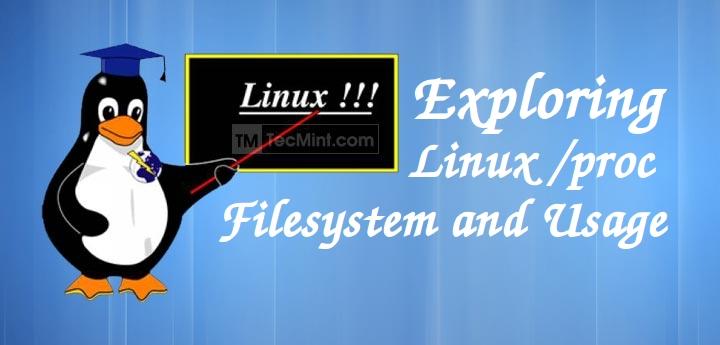
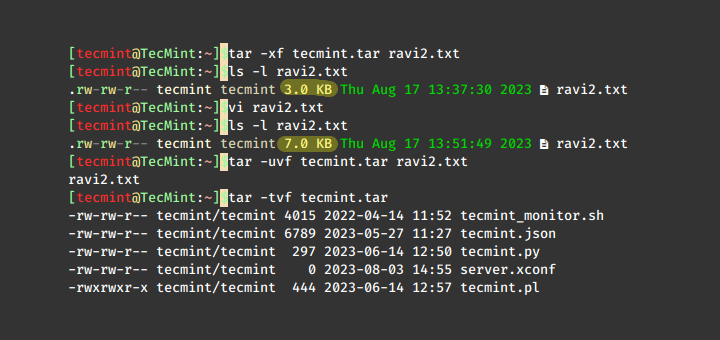
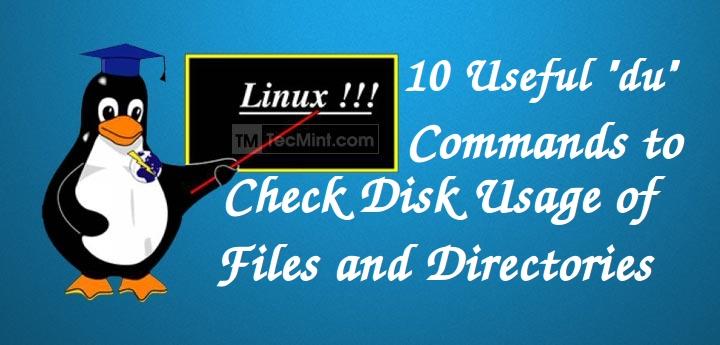
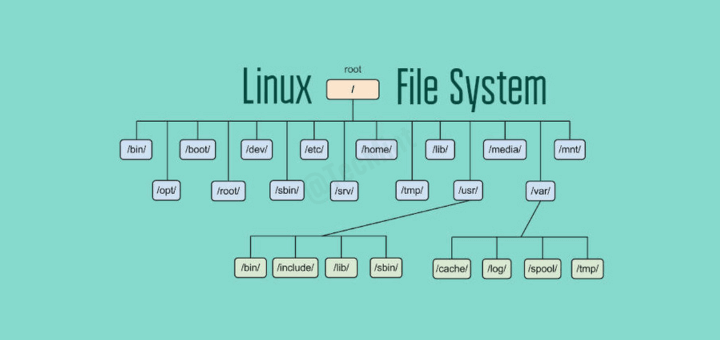
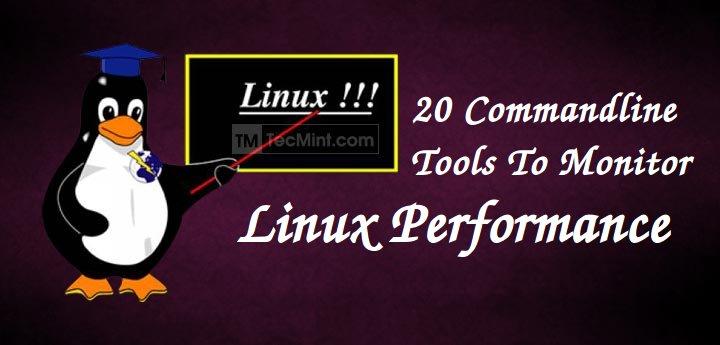
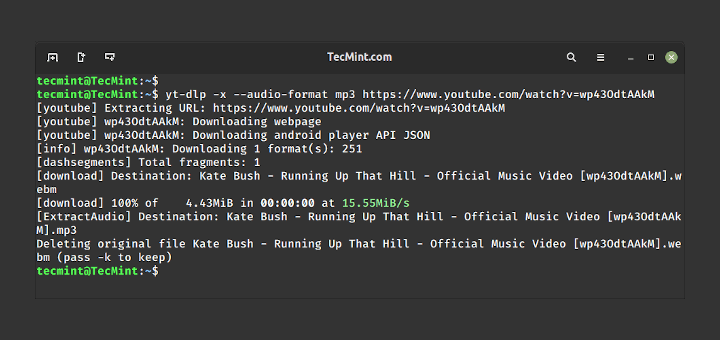
dd is Disk Dump. I use it to back up a hard drive to a
.isofile before I do any work on it ie recover files, upgrade os, etc.Nicely paced article
As i know; is a meta character which is used to separate two commands then what is the use of command after ; here in this dd command and what bs=512M used for?